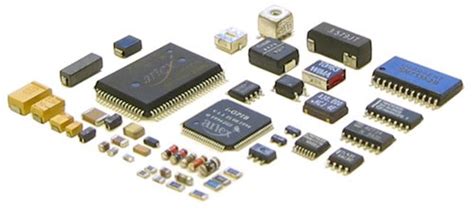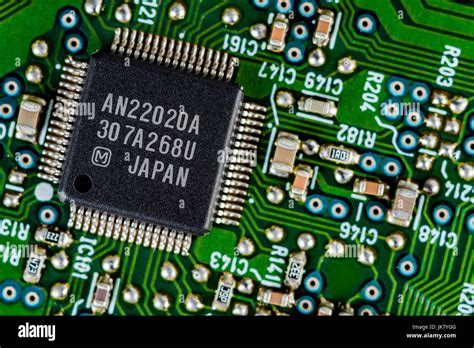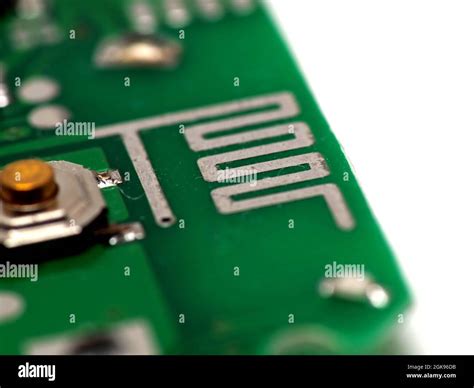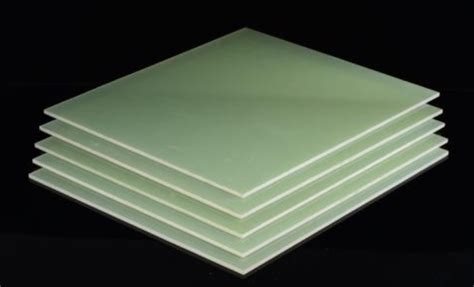Understanding Surface Mount PCB Components and Their Applications

Key Takeaways
Understanding surface mount PCB components is essential for anyone involved in modern electronics. These components are integral to the PCB assembly (PCBA) process, offering numerous advantages that enhance performance and efficiency. The compact design of surface mount technology (SMT) allows for a higher density of components on a circuit board, optimizing space and enabling more intricate designs. Furthermore, the use of surface mount components results in reduced production time and lower costs due to faster assembly processes.
Additionally, these components have demonstrated excellent reliability in various applications, from consumer electronics to industrial machinery. Their ability to perform well under different environmental conditions makes them versatile and valuable in numerous fields. When designing with surface mount PCB components, it is crucial to consider factors such as thermal management and signal integrity to ensure optimal functionality. Overall, the adoption of surface mount technology has drastically transformed the landscape of electronic device manufacturing, paving the way for innovative solutions and advanced technological developments. Understanding these elements is vital for those engaged in the design and production of PCBs as they continue to evolve with industry demands.

Introduction to Surface Mount Technology
Surface Mount Technology (SMT) revolutionized the field of PCB assembly by enabling the integration of surface mount PCB components into modern electronic devices. This technique allows for components to be mounted directly onto the surface of printed circuit boards (PCBs), which contrasts with earlier methods that required drilling holes for component leads. The compact nature of surface mount components provides manufacturers with the ability to design smaller, lighter, and more efficient circuits, thereby enhancing overall device functionality. Furthermore, the streamlined manufacturing process associated with SMT leads to faster production times and reduced costs, making it a preferred choice in today’s competitive market. As more industries embrace this technology, the demand for high-quality PCBA becomes increasingly paramount. Ultimately, understanding Surface Mount Technology is essential for harnessing its full potential in various technological solutions, helping engineers design innovative products that cater to consumer needs.

Key Types of Surface Mount PCB Components
Surface mount PCB components are essential building blocks of modern electronics, providing a range of functions that enhance both design and performance. The most common types of surface mount components include resistors, capacitors, inductors, and integrated circuits (ICs). Each of these component types plays a distinct role in pcb assembly and contributes to the overall efficiency and effectiveness of electronic devices.
Resistors are fundamental components that regulate the flow of electric current, ensuring that other parts of the circuit receive appropriate voltage levels. They come in various forms, such as fixed or variable, allowing for flexibility in circuit design. In terms of mounting, surface mount resistors typically have small footprints, making them ideal for compact designs.
Capacitors serve to store electric energy temporarily and manage fluctuations in voltage levels. They are crucial for applications such as filtering signals and smoothing power supplies. Similar to resistors, surface mount capacitors are available in several types—ceramic, tantalum, and electrolytic—each catering to specific needs in terms of capacitance values and size constraints.
Inductors, while less commonly discussed than resistors and capacitors, are vital for applications involving alternating currents (AC) as they store energy in a magnetic field when electrical current passes through them. Surface mount inductors also come in various shapes and sizes, providing flexibility for designers working on compact pcba projects.
Finally, integrated circuits (ICs) encapsulate multiple electronic functions into a single package. These can include microcontrollers, amplifiers, or application-specific configurations tailored for unique tasks within a device. The ability to utilize surface mount ICs allows engineers to maximize functionality while minimizing board space—crucial for modern electronic devices.
The table below outlines key characteristics of these primary surface mount components:
| Component Type | Function | Key Advantages |
|---|---|---|
| Resistors | Regulate current flow | Compact size |
| Capacitors | Store energy & filter signals | Versatile applications |
| Inductors | Store energy in magnetic fields | Essential for AC circuitry |
| Integrated Circuits | Combine multiple functions | Space-saving versatility |
By understanding these key types of surface mount PCB components, designers can make informed decisions that enhance the overall performance and efficiency of their electronic devices while navigating the complexities of modern pcba processes.
Advantages of Surface Mount Components in Electronics
Surface mount components have significantly transformed the landscape of electronic design and manufacturing. One of the primary advantages of using these components in PCB assembly is their compact size, which allows for a higher density of components on a single board. This increased density not only saves space but also enhances the overall performance of the device by reducing the distance between components, which improves signal integrity. Furthermore, the flat profile of these components enables a more efficient use of space, making them ideal for miniaturized devices such as smartphones and wearable technology. Additionally, the manufacturing process for surface mount technology (SMT) is typically faster and more automated than traditional through-hole techniques, which can lead to lower production costs and increased throughput in production lines. Another significant benefit is improved thermal performance; since surface mount components are soldered directly to the PCB surface, they can dissipate heat more effectively than their through-hole counterparts. Overall, embracing surface mount PCB assembly not only enhances functionality but also supports ongoing innovation in various technological applications, allowing designers to push the boundaries of what modern electronics can achieve.

Designing with Surface Mount PCB Components
When it comes to designing with surface mount PCB components, several factors must be considered to ensure optimal functionality and efficiency. Surface mount technology (SMT) allows for higher density component placement on printed circuit boards (PCBs) compared to traditional through-hole components. This advancement not only reduces overall space requirements but also enhances performance due to shorter electrical pathways.
In the realm of PCB assembly, understanding the layout and placement of these components is critical. The design process often begins with the selection of appropriate surface mount components, keeping in mind their electrical characteristics and physical dimensions. Effective use of software tools for schematic capture and layout can streamline this process, allowing designers to visualize the circuit flow and optimize component positioning for thermal management and signal integrity.
One might consider that utilizing surface mount technology can lead to challenges, particularly when integrating into existing designs that traditionally use through-hole components. However, the shift towards SMT lays down a more robust foundation for modern electronics, facilitating high-speed operations that are increasingly desired in today’s devices.
“The future of electronics relies heavily on efficient design practices; embracing surface mount technology is a step in the right direction.”
In summary, prioritizing thoughtful considerations during the design phase can turn potential obstacles into opportunities, enabling designers to harness the full potential of PCBA processes while creating compact, high-performance electronic devices.
Applications of Surface Mount Technology in Modern Devices
Surface mount technology (SMT) has revolutionized the landscape of pcb assembly by enabling the integration of a wide array of surface mount PCB components in modern electronic devices. These compact, lightweight components are ideal for applications where space and weight are at a premium, such as in smartphones, wearable technology, and IoT devices. The ability to place components on both sides of a circuit board allows for higher circuit densities, resulting in more versatile designs and increased functionality. In consumer electronics, such as televisions and home appliances, pcba processes using SMT ensure that devices are not only efficient but also meet the demands for sleek aesthetics. Furthermore, SMT facilitates automated production processes that enhance manufacturing efficiencies and reduce production costs. As the trend continues towards miniaturization and enhanced performance in electronic devices, the applications of surface mount technology will expand further into sectors like automotive electronics and medical devices, where reliability and precision are critical. In summary, surface mount PCB components play an integral role in modern technological solutions by enhancing both functionality and design flexibility across various industries.
Challenges and Considerations in Surface Mount PCB Design
Designing with surface mount PCB components presents several challenges that engineers and designers must navigate to ensure optimal functionality and efficiency. One significant consideration is the thermal management of the components. Given their compact size, surface mount technology (SMT) can lead to higher heat concentration, requiring careful planning of heat dissipation through appropriate layout design and the selection of materials. Moreover, ensuring compatibility between various soldering techniques is crucial for successful PCB assembly (PCBA). Different components may have varying thermal sensitivities, which can compromise solder joints if not properly accounted for during the PCB assembly process.
Additionally, precision in placement during manufacturing is vital; even slight misalignments can result in poor connectivity or solder bridges that can fail a circuit. Designers must also consider the impedance control within high-speed applications, as surface mount components can introduce signal integrity issues if not properly designed. Moreover, component selection plays a critical role; designers need to balance availability and cost with functional requirements to ensure that the chosen components meet both performance specifications and budget constraints.
Finally, accessibility for testing and repairs presents another layer of complexity. While surface mount technology allows for more compact designs, it often makes troubleshooting more challenging compared to traditional through-hole designs. Therefore, designers must weigh these challenges against the benefits of surface-mount technology to create efficient and reliable electronic devices that meet modern demands.
Future Trends in Surface Mount Component Technology
The field of surface mount technology is rapidly evolving, driven by the increasing demand for high-density PCB assembly and more compact device designs. As manufacturers strive to optimize PCBA processes, emerging trends indicate a shift toward even smaller and more efficient surface mount PCB components. Innovations such as automated assembly techniques and advanced materials are set to enhance the reliability and performance of these components, making them integral to the next generation of electronic devices. Additionally, the focus on sustainability is prompting the development of eco-friendly materials that not only meet performance standards but also reduce environmental impact during production and disposal. The integration of smart technology within surface mount components is also gaining traction; this allows for enhanced functionalities such as real-time monitoring and diagnostics in various applications. As a result, we can anticipate that future designs will prioritize both efficiency and sustainability, ensuring that surface mount technology remains at the forefront of innovation in modern electronics.

Conclusion
In summary, surface mount PCB components represent a significant advancement in pcb assembly techniques, offering numerous benefits that enhance modern electronic devices. These components are compact, allowing for more efficient use of space on PCBs while contributing to increased functionality and performance. Their ability to accommodate high-density designs has made them a preferred choice in a wide array of applications, ranging from consumer electronics to complex industrial systems. Understanding the intricacies of these components is essential for engineers looking to leverage the advantages of pcba technology effectively. As the industry evolves, ongoing innovations in surface mount technology will likely continue to reshape the landscape of electronics manufacturing, ensuring that devices become even more powerful and efficient. This awareness will ultimately drive forward-thinking design practices that harness the full potential of surface mount PCB components, paving the way for future advancements in technology.

FAQs
What are surface mount PCB components?
Surface mount PCB components are electronic components that are mounted directly onto the surface of a printed circuit board (PCB) rather than through holes as in traditional soldering methods. This technology enables more compact designs and improved performance in electronic devices.
What are the advantages of using surface mount technology?
The advantages include reduced sizes of the PCB assembly, increased circuit density, enhanced performance, and often lower costs associated with manufacturing. Additionally, PCBA processes can be automated more effectively.
Can surface mount components be used in all electronic applications?
While surface mount components are beneficial in many applications, they may not be suitable for every project. Certain high-power applications or those requiring significant thermal management might still benefit from using traditional through-hole components.
How do I design a PCB with surface mount technology?
Designing a PCB with surface mount technology involves careful layout considerations, including pad size, spacing between components, and the use of specific design software that supports PCBA processes for better accuracy.
Are there any challenges when working with surface mount PCBs?
Yes, challenges include the requirement for precise soldering techniques, potential for assembly issues due to component size, and difficulties in manual soldering when repairs or modifications are necessary.
For more detailed information regarding PCB assembly, please click here: Andwin PCB Assembly.







